Starting May 7 to May 10, 2012, the protesters of the March of the Millions rallied peacefully in the city center of Moscow. Police reacted by chasing the protesters in the streets, taking them into custody, putting them into police transports, chatting them up and letting them go. Some people were said to get detained by the police for up to 5 times. That scheme worked for 3 days and finally the hide and seek marathon seemed to have ended around the Chistye Prudy, a pond at one of the central boulevards of Moscow. The monument to Abay Kunanbaev, a Kazakh poet, became a landmark and gave the name to the camp: #OccupyAbay.
Photos by Drugoi, Mi3ch, Alex Kazakov and Jean Dzhibladze:
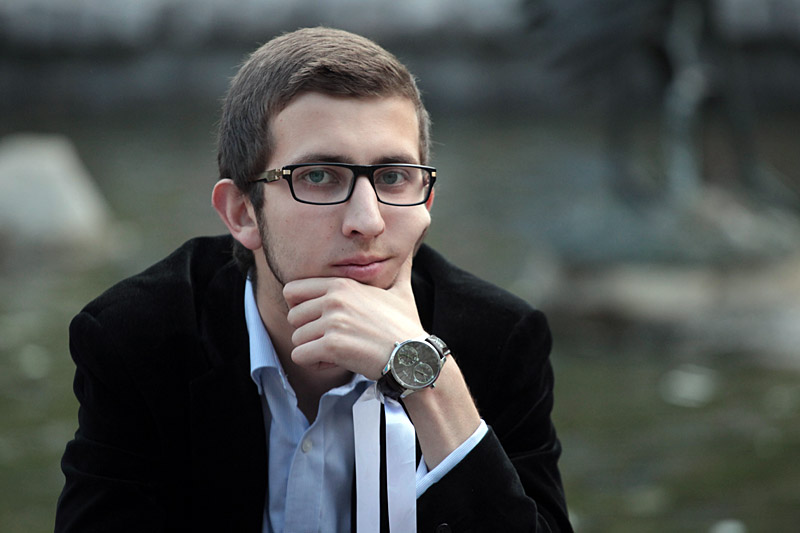
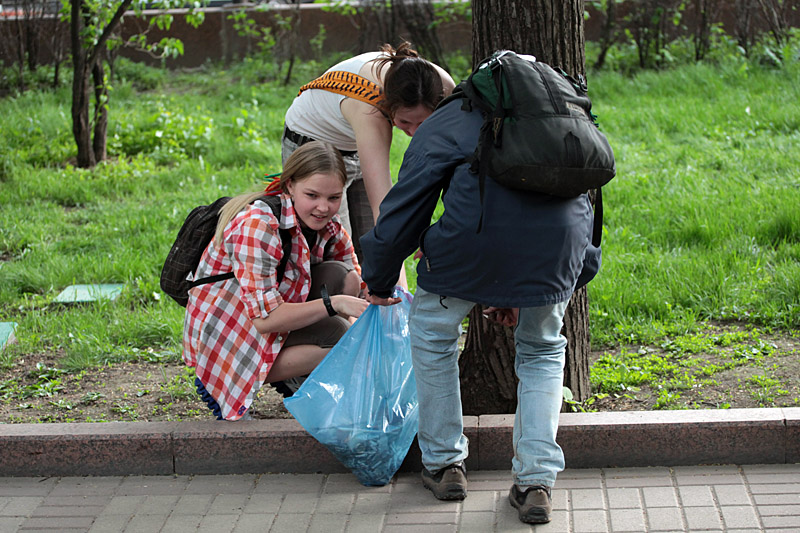
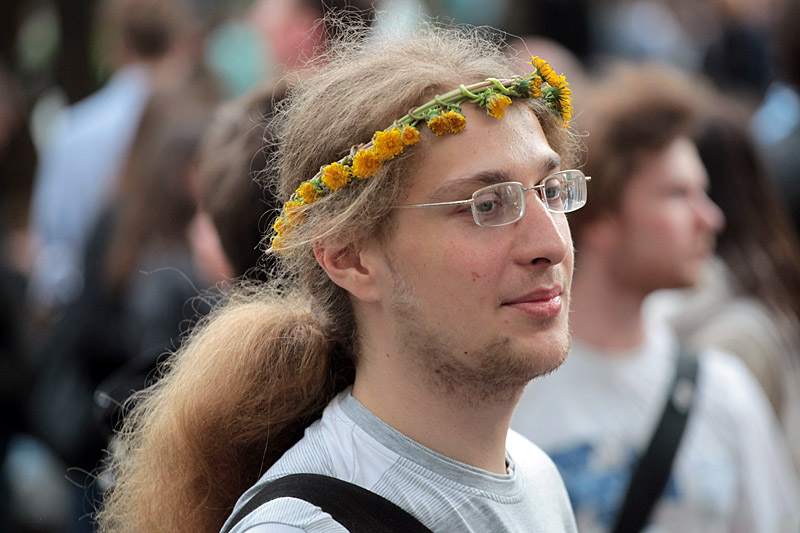
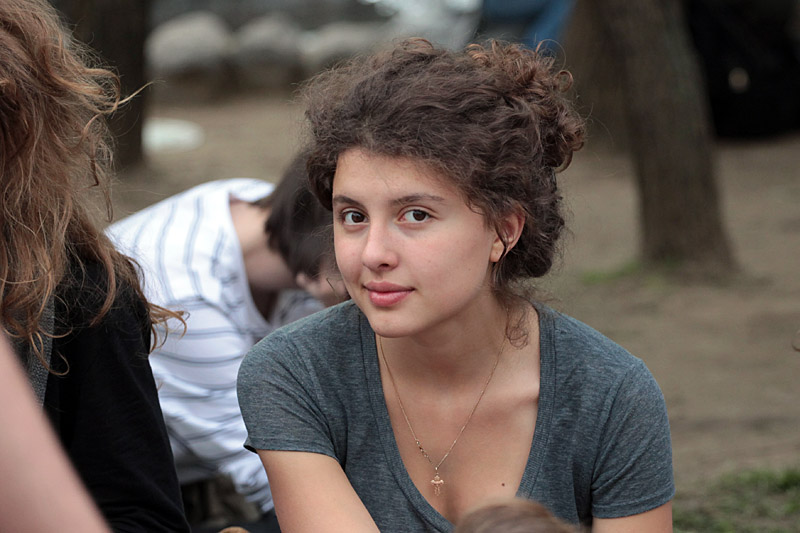
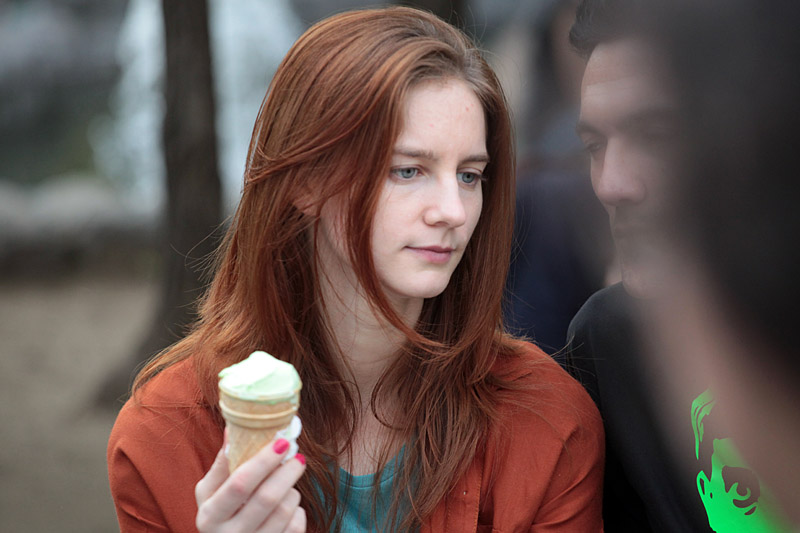
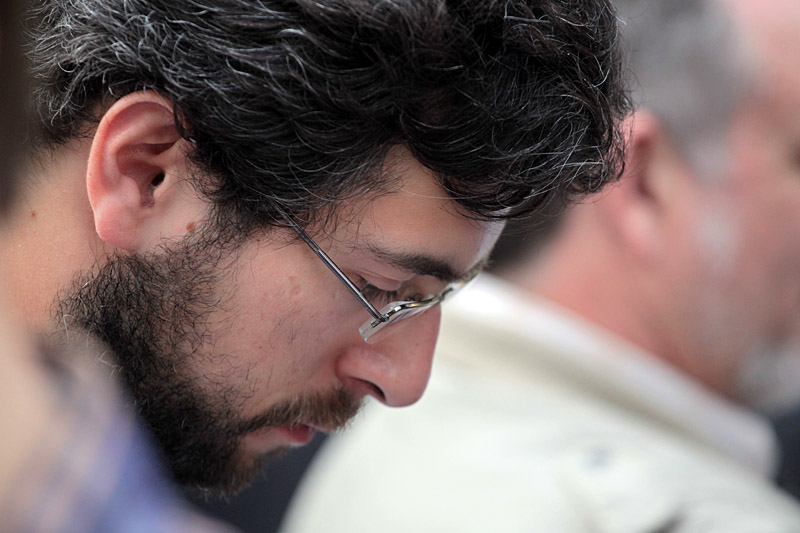
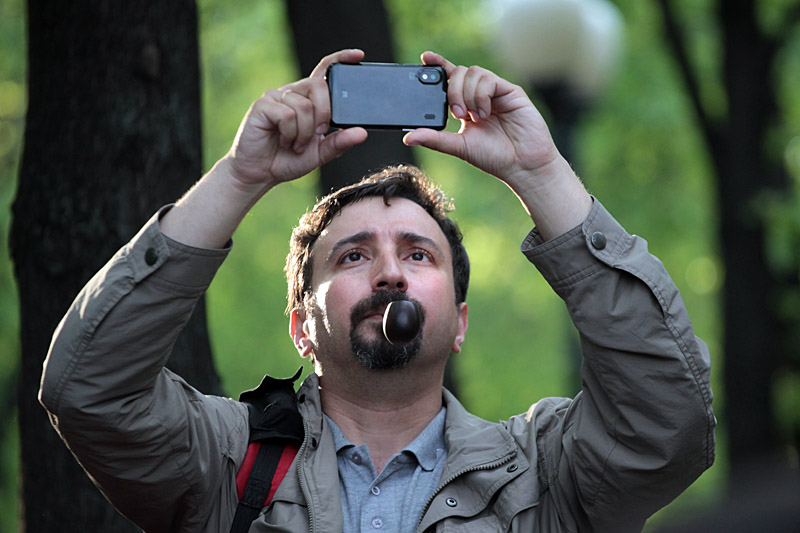
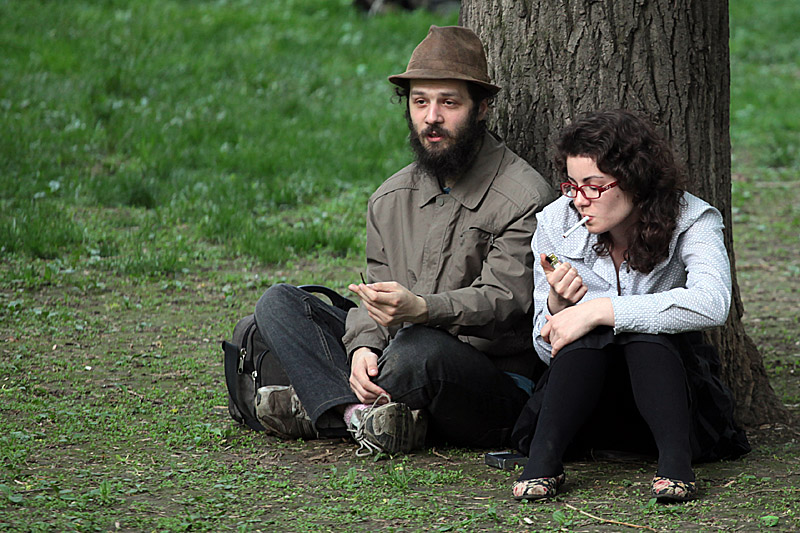
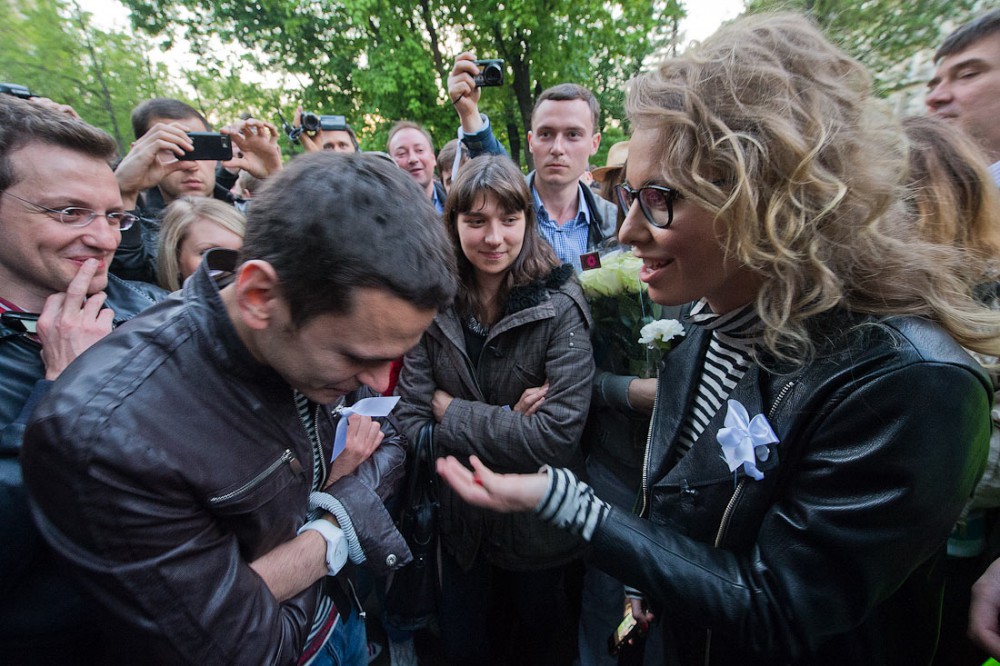


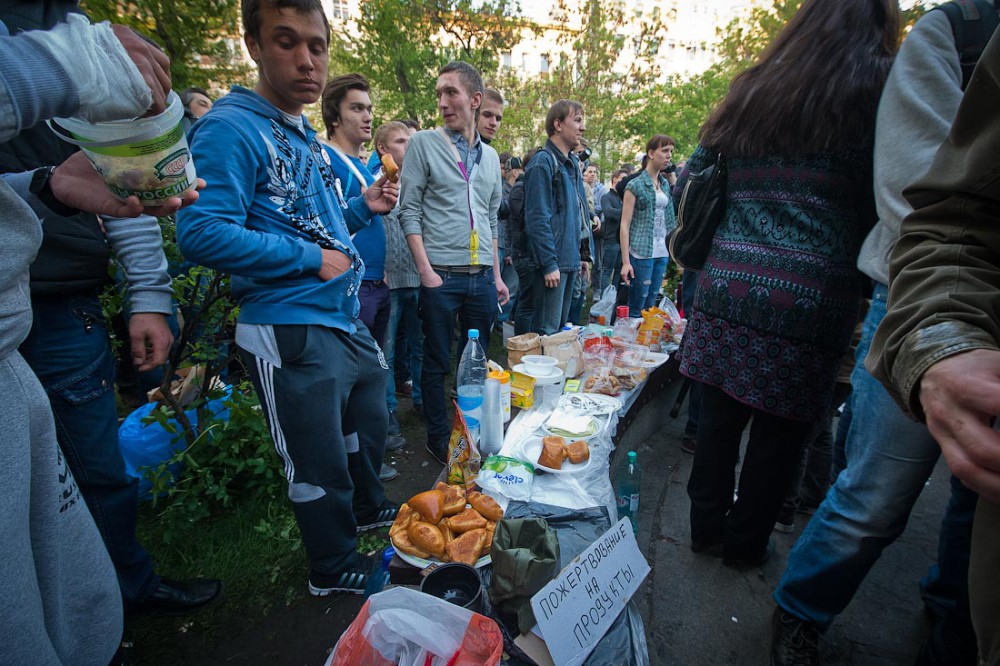



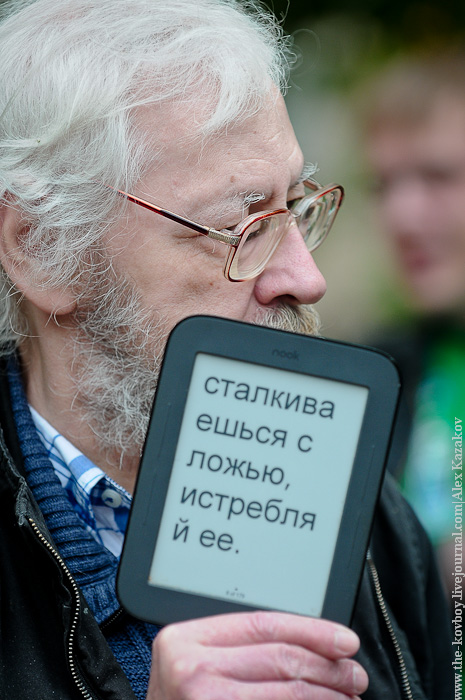
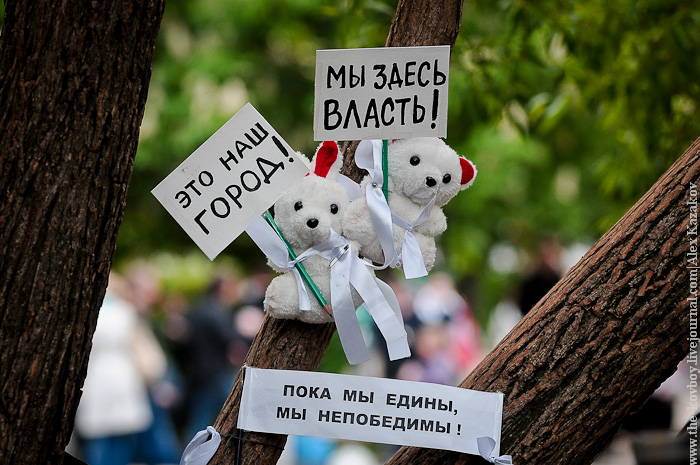
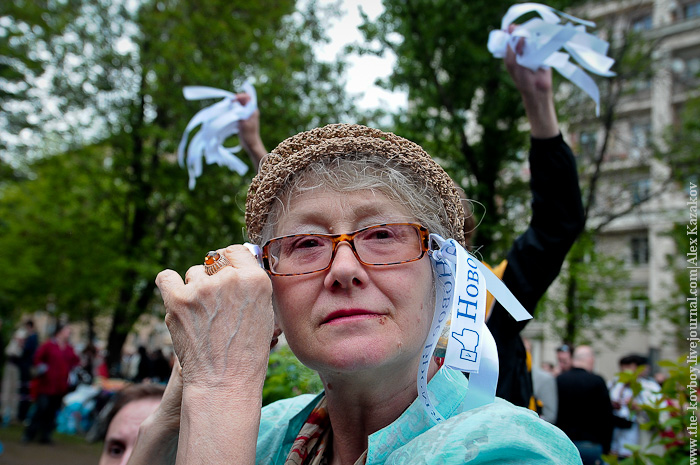
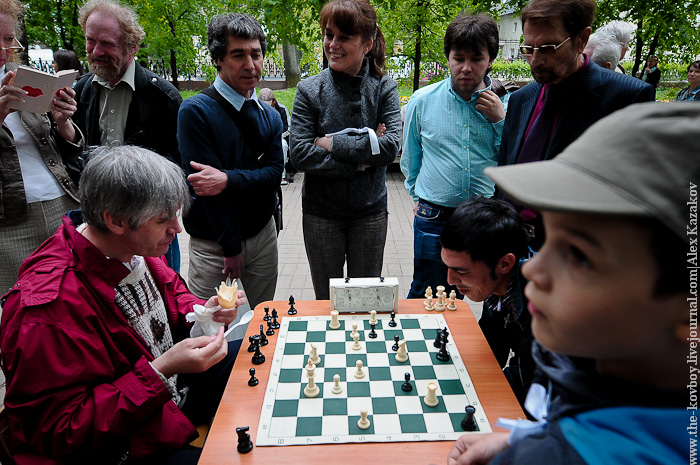
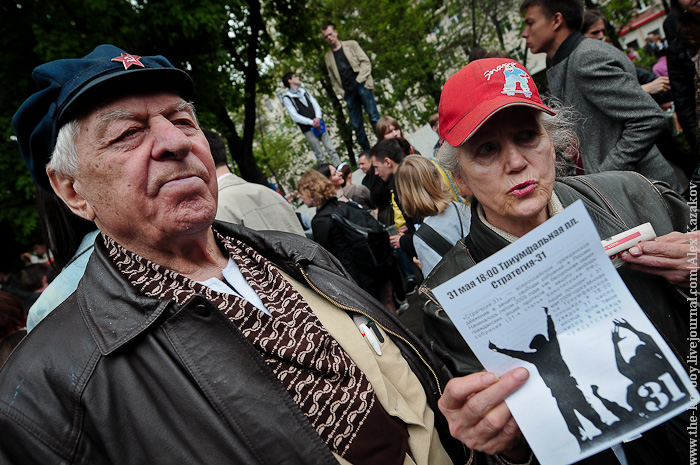
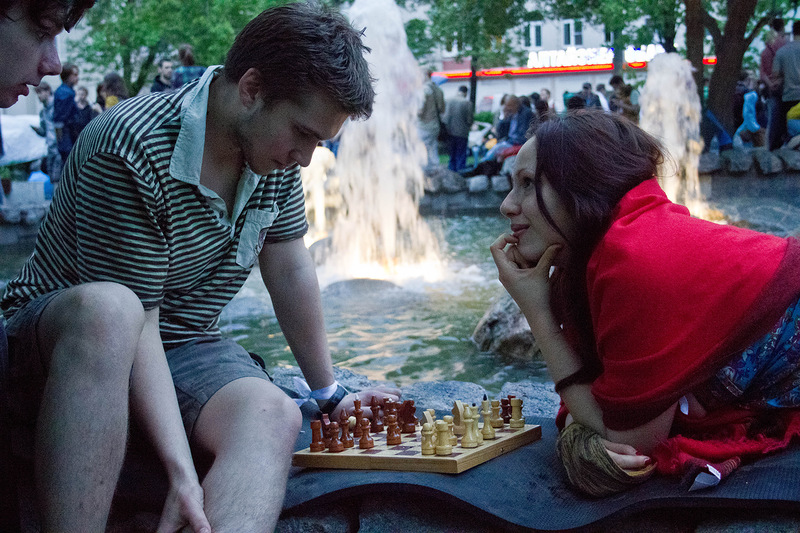
The police allowed the camp to emerge, as the most active participants brought their tents and sleeping bag and even spent the night there. The less enthusiastic ones visited the camp only after work and afterwards went home to sleep properly.
Surprisingly, the more people were coming in, the more organized the event became. Campers collected money for food and supplies, cooked up rules and regulations, brought a petrol-powered generator to charge the gadgets, installed free wifi and even set up portable toilets. Other campers supplied the intellectual component. Currently, many of the trees in the camp have cardboard signs specifying the locations of discussion clubs, seminars or lectures to be taking place later on. The movement even has its own newspaper, printed out on an A4 page, front and back.
The main rule of this movement is no violence. The #occupiers seem to abide most of the laws in order not to piss off the police. Unlike many instigators (supposedly from pro-Kremlin youth organizations), that are trying to do everything to provoke clashes. On Sunday, a man even walked a cow in order to enforce the law upon the crowd, with no success whatsoever.
The public sentiment towards the Chistoprudny Blrd gathering is constantly fluctuating between “What a group of brave guys” and “What a bunch of hippies”. The truth is, both answers seem about right. These strolls, campings and walkabouts are currently the only way of protesting against the illegitimate elections and other violations that doesn’t lead to any kind of fights or violence. Youngsters who were previously stuck in social networks now got a place for a real political discussion, conversations with interesting people and even active pastime, like frisbee, badminton and other outdoor sports. However, the average age of 24/7 camp dwellers quite rationally provokes a question “Why don’t these chaps get a job?”
As a result, #OccupyAbay seems to be a true #occupy movement, with a regional twist. But there is one crucial difference between Russia and USA in terms of its composition. In Russia, it consists of the creative class people, young and hyper-ambitious. In the US, that would be exactly the same if not for one more remark: across the pond, the creative class has jobs and doesn’t attend such events.
UPD: Following the decision of Basmanny Court of Moscow, the camp, which was allegedly creating troubles for the district dwellers, ceased to exist as of 5:10am (Moscow time). OMON forces dispersed the crowd quite peacefully and let the most of it leave. The remainders of #OccupyAbay relocated to a park near Barrikadnaya metro station.
May 16
5 am — The police arrives at #OccupyAbay location and closes the camp quietly. Since the remaining campers were still sleeping, the police had no chance to practice its signature brutality. Only words.
Noon — The remaining organizers, including the opposition leader Ilya Yashin, decide to relocate the camp to the park near Barrikadnaya metro station. #OccupyBarrikady is born.
Evening — More people arrive at the new location and continue the previously interrupted protests.
May 17
The camp is still active, but in the evening squads of police show up at the square. Conflicts reignite as some of the police officers decide that a canister with porridge and a couple of water bottles mean that the campers have organizers an illegal food distribution point. The police confiscate the items as well as a box with RUR 250,000 (approximate value) that the protesters had collected for camp purposes. Not happy with such decisions, people start to protest and demand for their things back, which OMON considers as a command to attack. Several people are arrested; some OMON trucks get their tires slashed.
May 18
The camp is dispersed yet again due to the alleged complaints of the locals. Less and less people remain in the crowd. As Ilya Yashin gets arrested, the beheaded camp divides into 2 parts: on Nikitsky Boulevard and on Arbat Street. Several minor police conflicts aside, the camps remain at their spots, but of course not as glorious and powerful as before.
